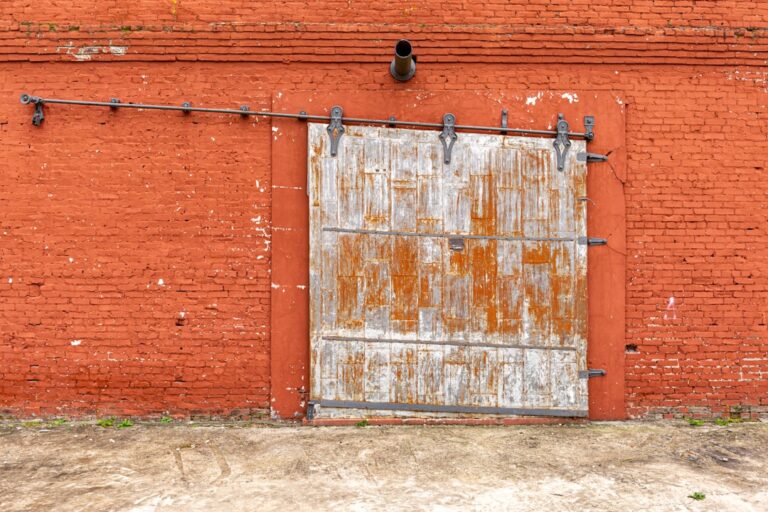Create Your Own Candle: A Step-by-Step Guide

Candle making is an ancient craft that has endured through the centuries. This creative pursuit allows individuals to produce customized candles tailored to their personal tastes and requirements. The process can be both therapeutic and enjoyable, whether creating candles for personal use or as gifts.
Various techniques exist for candle making, including traditional hand-dipping, modern container candles, and decorative molded candles. Despite the diverse methods, the fundamental principles remain consistent: melting wax, incorporating fragrance and color, pouring the wax into molds or containers, and allowing it to solidify. With practice and appropriate materials, one can produce high-quality candles that provide warmth and fragrance to any environment.
The versatility of candle making allows for experimentation with different wax types, fragrances, colors, and decorative elements. Wax options include natural beeswax and smooth soy wax, among others. A wide array of fragrances can be incorporated, ranging from floral and fruity to warm and cozy scents.
Visual appeal can be enhanced through the addition of color and decorative elements such as dried flowers, herbs, or glitter. With the proper tools and materials, individuals can create unique, personalized candles that showcase their creativity and style.
Key Takeaways
- Candle making is a fun and creative hobby that allows you to customize your own scented candles.
- Choosing the right materials and tools is essential for successful candle making, including wax, wicks, fragrance oils, and containers.
- Preparing your workstation with a clean and organized space will make the candle making process easier and more enjoyable.
- Selecting the perfect fragrance is a key step in candle making, as it will determine the overall scent of your finished product.
- Melting and pouring the wax requires careful attention to temperature and technique to ensure a smooth and even finish for your candles.
- Adding color and decorative elements allows you to personalize your candles and create unique designs.
- Allowing the candle to set properly is important before enjoying the finished product, so be patient and let it cool and harden completely.
Choosing the Right Materials and Tools
Understanding the Characteristics of Different Waxes
Each type of wax has its own unique characteristics and benefits, so it’s important to consider your specific needs and preferences when selecting the right wax for your candles. Additionally, you will need wicks, fragrance oils or essential oils, colorants, and containers or molds for your candles. It’s important to use high-quality materials to ensure that your candles burn evenly and emit a strong, pleasant fragrance.
The Importance of Having the Right Tools
In addition to materials, having the right tools is crucial for successful candle making. Some essential tools for candle making include a double boiler or melting pot for melting the wax, a thermometer to monitor the temperature of the wax, a heat-resistant stirring utensil, a scale for measuring ingredients, and a pouring pot for transferring the melted wax into molds or containers. You may also need a wick holder or centering device to keep the wick in place while the wax sets.
Efficient and Enjoyable Candle Making
Having the right tools on hand will make the candle making process more efficient and enjoyable, allowing you to create professional-looking candles with ease.
Preparing Your Workstation

Before you begin making candles, it’s important to prepare your workstation to ensure a safe and organized working environment. Start by selecting a clean and well-ventilated area with a flat surface for your candle making activities. Cover the work surface with newspaper or a disposable tablecloth to protect it from spills and drips.
Gather all the necessary materials and tools within easy reach to avoid unnecessary interruptions during the candle making process. It’s also important to have a fire extinguisher nearby in case of emergencies, as working with hot wax can pose a fire hazard. In addition to preparing your physical workspace, it’s important to take safety precautions when working with hot wax and other candle making materials.
Always wear protective clothing such as an apron or old clothes to shield your skin from spills and splatters. Use heat-resistant gloves when handling hot containers or molds, and be mindful of open flames when working with fragrances or dyes. Keep children and pets away from your workstation to prevent accidents or injuries.
By taking the time to prepare your workstation and prioritize safety measures, you can enjoy a stress-free and productive candle making experience.
Selecting the Perfect Fragrance
| Aspect | Metrics |
|---|---|
| Personal Preference | Favorite scent families |
| Longevity | Duration of scent on skin |
| Sillage | Trail or projection of scent |
| Seasonality | Appropriate for different seasons |
| Occasions | Daytime, evening, formal, casual |
One of the most enjoyable aspects of candle making is selecting the perfect fragrance for your candles. The right fragrance can evoke memories, create ambiance, and enhance the overall experience of burning a candle. When choosing a fragrance for your candles, consider the mood or atmosphere you want to create.
For example, floral scents such as lavender or rose are calming and soothing, while citrus scents like lemon or orange are refreshing and invigorating. Warm and cozy fragrances such as vanilla or cinnamon are perfect for creating a cozy atmosphere during colder months. Additionally, you can experiment with blending different fragrances to create unique scent combinations that reflect your personal preferences.
In addition to fragrance oils, you can also use essential oils to scent your candles naturally. Essential oils are derived from plants and offer therapeutic benefits in addition to their pleasant aromas. Some popular essential oils for candle making include lavender, eucalyptus, peppermint, and bergamot.
When using essential oils in candle making, it’s important to research their specific usage rates and compatibility with different types of wax to ensure optimal results. By carefully selecting and blending fragrances for your candles, you can create a sensory experience that delights the senses and enhances the ambiance of any space.
Melting and Pouring the Wax
The process of melting and pouring wax is a fundamental step in candle making that requires precision and attention to detail. To melt the wax, use a double boiler or melting pot to heat the wax gently over low to medium heat. It’s important to monitor the temperature of the wax using a thermometer to prevent overheating or scorching, which can affect the quality of your candles.
Different types of wax have specific melting points, so it’s important to follow the manufacturer’s instructions for melting temperatures and techniques. Once the wax has reached the desired temperature, carefully add fragrance oils or essential oils according to the recommended usage rates for optimal scent throw. After adding fragrance, it’s time to pour the melted wax into molds or containers.
Use a heat-resistant pouring pot to transfer the wax smoothly and evenly without spilling or splashing. If you are using molds, make sure they are clean and dry before pouring the wax to ensure a smooth finish on your candles. For container candles, place pre-tabbed wicks in the center of each container before pouring the wax to ensure proper placement.
It’s important to pour the wax slowly and steadily to avoid air bubbles or uneven surfaces on your candles. By mastering the art of melting and pouring wax, you can create professional-looking candles with consistent quality and performance.
Adding Color and Decorative Elements

Coloring Your Candles
Adding color to your candles is a great way to make them visually appealing and unique. You can use various coloring options such as liquid dyes, dye chips, or natural colorants like mica powder or dried botanicals. When adding color, start with a small amount and gradually increase until you achieve the desired shade.
Mixing and Adding Decorative Elements
It’s essential to mix the dye thoroughly into the melted wax to ensure even distribution and avoid streaks or clumps in your finished candles. You can also enhance the visual appeal of your candles by incorporating decorative elements like dried flowers, herbs, or glitter. These elements can be added directly into the melted wax before pouring or sprinkled on top of the candle while the wax is still soft.
Safety Precautions and Creative Freedom
Remember to use caution when choosing decorative elements, avoiding flammable materials that may pose a fire hazard when burned. Also, be mindful not to overload your candles with excessive decorations. By adding color and decorative elements thoughtfully, you can create unique and eye-catching candles that reflect your personal style and creativity.
Allowing the Candle to Set and Enjoying the Finished Product
After pouring the wax and adding color and decorative elements, it’s important to allow the candles to set properly before handling or burning them. The setting time will vary depending on the type of wax used and the size of the candles, so it’s important to follow specific guidelines for each candle making project. Once the candles have fully set and cooled, trim the wicks to about 1/4 inch to ensure a clean burn and prevent excessive smoking or soot buildup.
Once your candles are ready, it’s time to enjoy the finished product! Light your candles in a safe area away from flammable materials and drafts, and enjoy their warm glow and delightful fragrance. Whether you keep them for yourself or give them as gifts, homemade candles add a personal touch to any space and provide hours of relaxation and enjoyment.
With practice and experimentation, you can continue to refine your candle making skills and create beautiful candles that bring joy and comfort to those around you. In conclusion, candle making is a versatile and rewarding craft that allows you to express your creativity while creating beautiful and functional products. By choosing the right materials and tools, preparing your workstation, selecting the perfect fragrance, melting and pouring wax with precision, adding color and decorative elements thoughtfully, allowing the candles to set properly, and enjoying the finished product, you can master the art of candle making and create high-quality candles that bring warmth and ambiance to any space.
Whether you are a beginner or an experienced crafter, there is always something new to learn in the world of candle making, so don’t be afraid to experiment with different techniques and methods to find what works best for you. With dedication and passion, you can elevate your candle making skills and create unique candles that reflect your individual style and personality.
If you’re looking for a creative and practical way to enhance your home environment, consider making your own candle. Not only is it a fun and rewarding DIY project, but it also allows you to customize the scent and design to your liking. For more tips on how to improve your home life, check out this article on working from home for some helpful insights and strategies.
FAQs
What are the basic materials needed to make a candle?
To make your own candle, you will need wax, a wick, a container, fragrance (optional), and a double boiler or microwave-safe container for melting the wax.
What type of wax is best for making candles?
The most commonly used waxes for making candles are paraffin wax, soy wax, and beeswax. Each type of wax has its own unique characteristics and benefits, so the best choice will depend on your specific preferences and needs.
How do you choose the right wick for your candle?
The size and type of wick you choose will depend on the type of wax, the diameter of the container, and whether you want a slow or fast burn. It’s important to select the right wick to ensure that your candle burns evenly and cleanly.
Can you add fragrance to your homemade candle?
Yes, you can add fragrance to your homemade candle by using candle fragrance oils. These oils are specifically designed for use in candles and come in a wide variety of scents to choose from.
What safety precautions should be taken when making candles?
When making candles, it’s important to follow safety guidelines such as using a double boiler or microwave-safe container for melting wax, keeping flammable materials away from the heat source, and working in a well-ventilated area. It’s also important to be cautious when working with hot wax to avoid burns or spills.
How long does it take to make a homemade candle?
The time it takes to make a homemade candle will depend on the type of wax you are using, the size of the candle, and whether you are adding fragrance or color. In general, it can take anywhere from 30 minutes to a few hours to make a homemade candle from start to finish.






